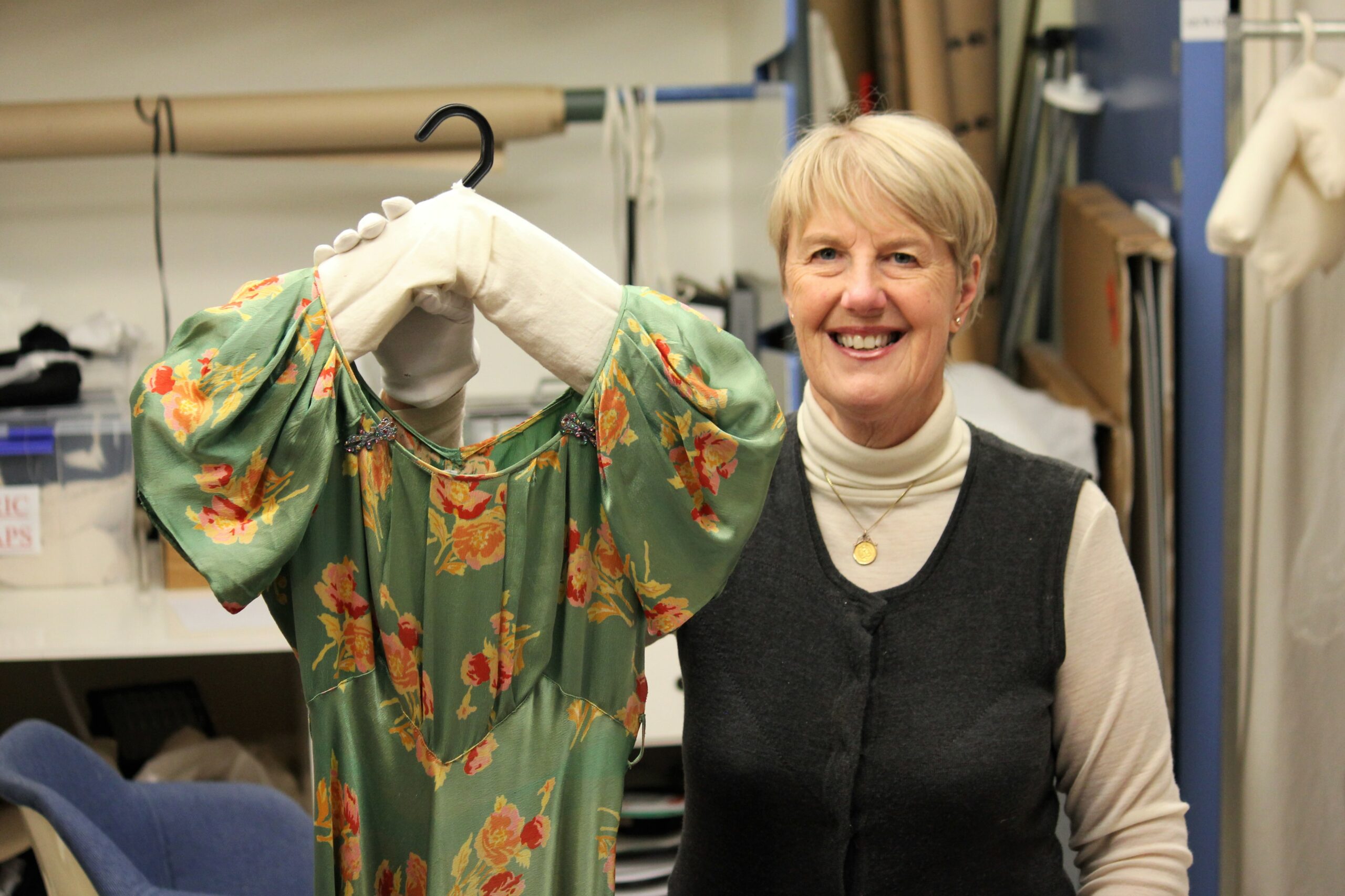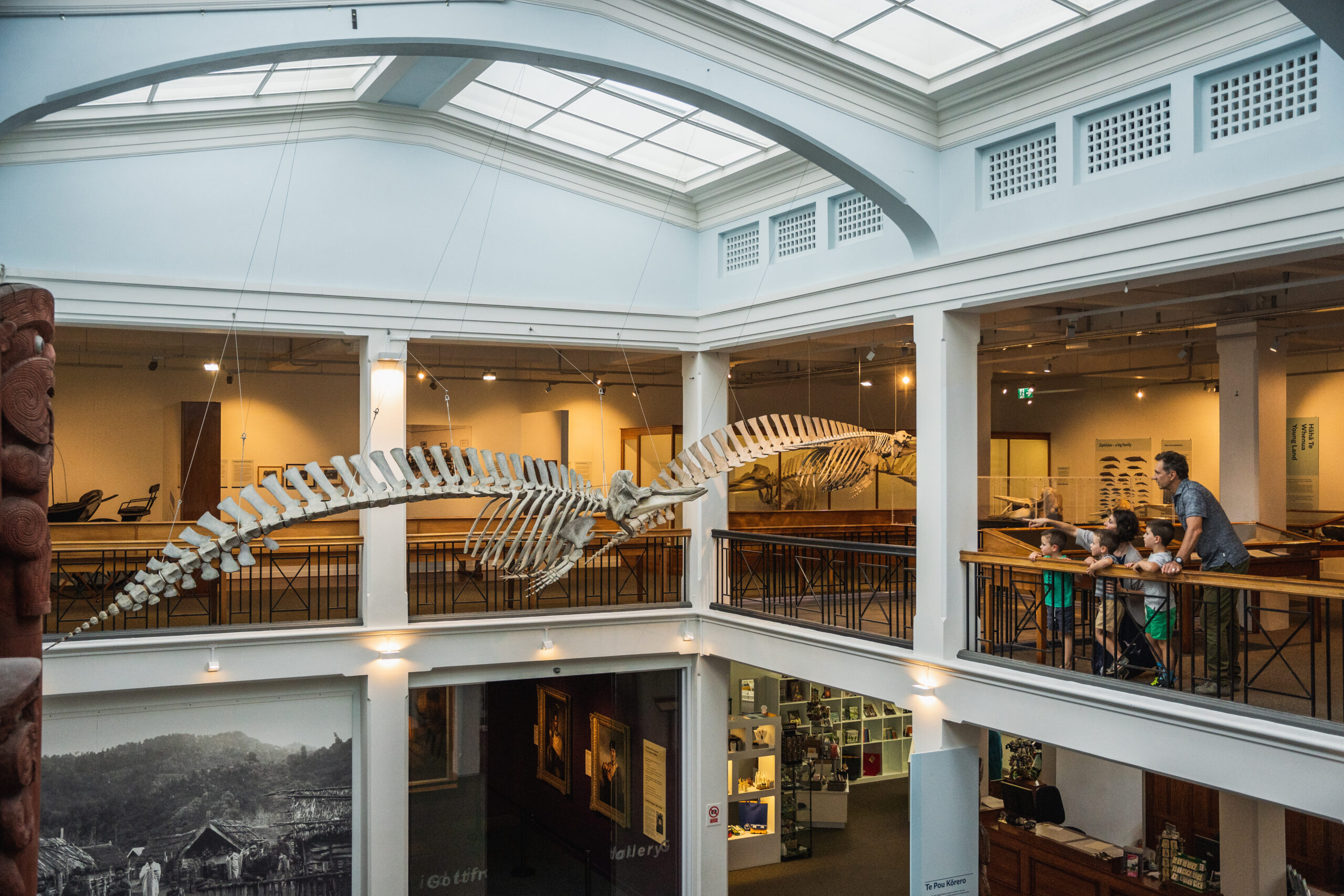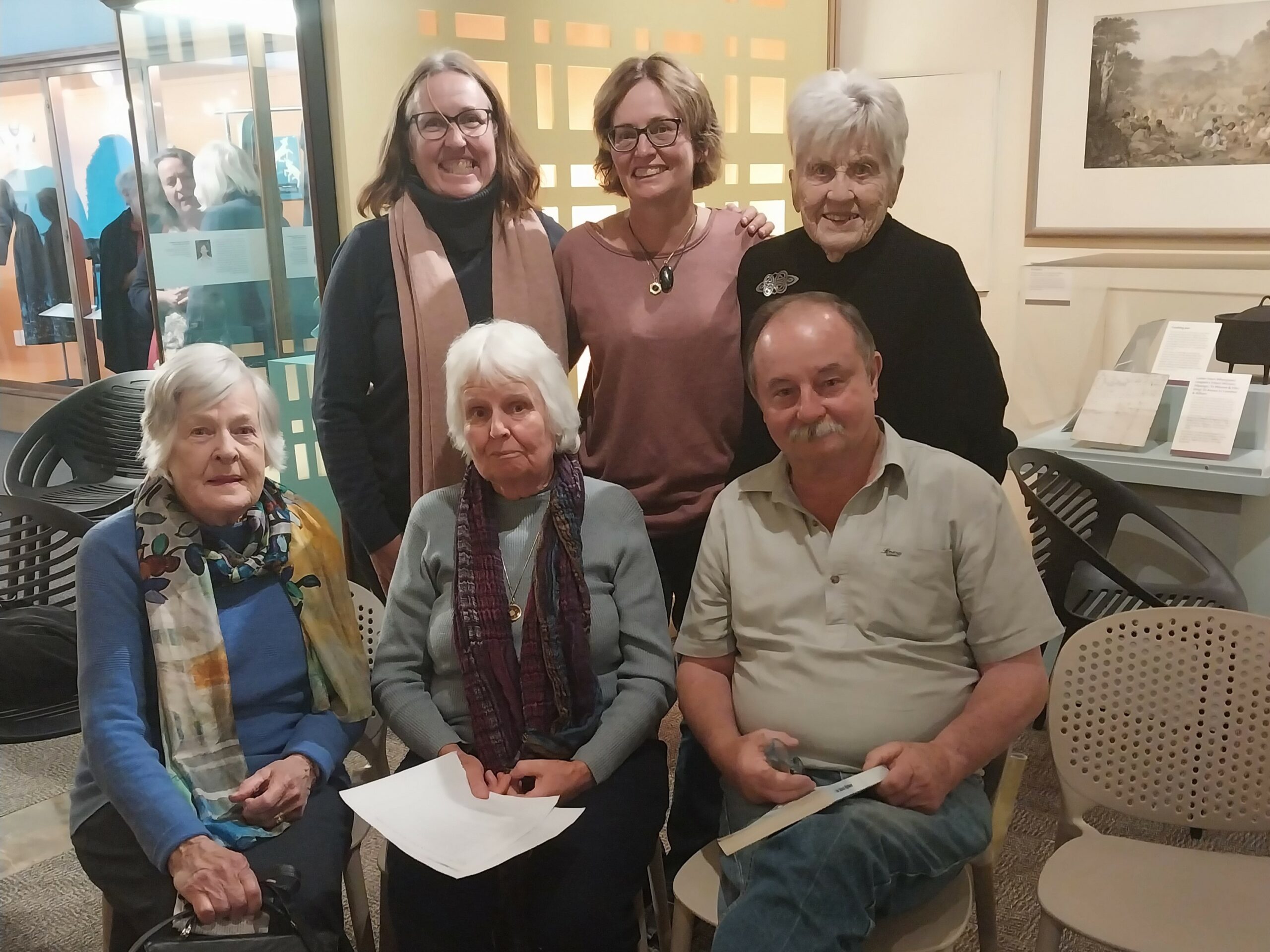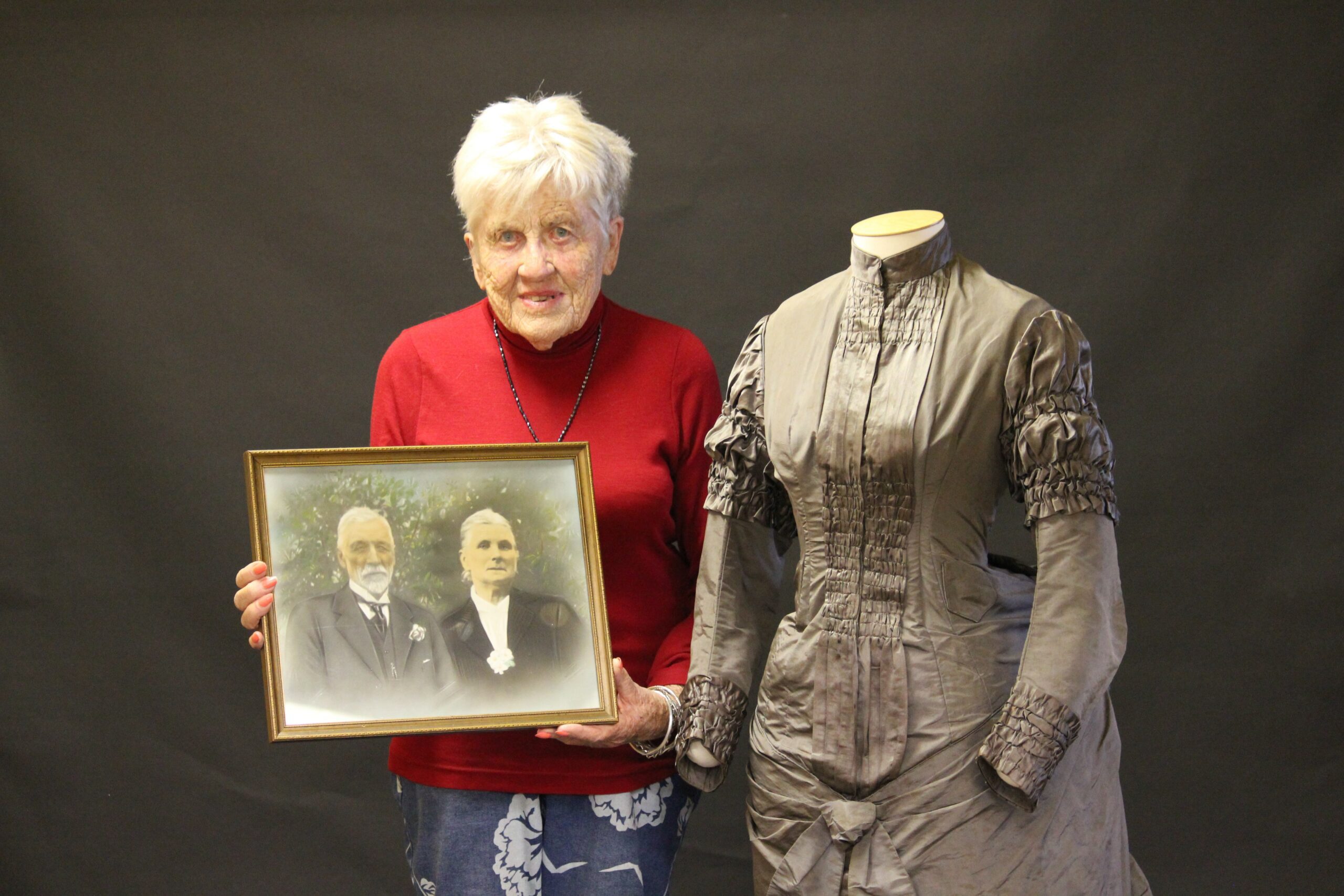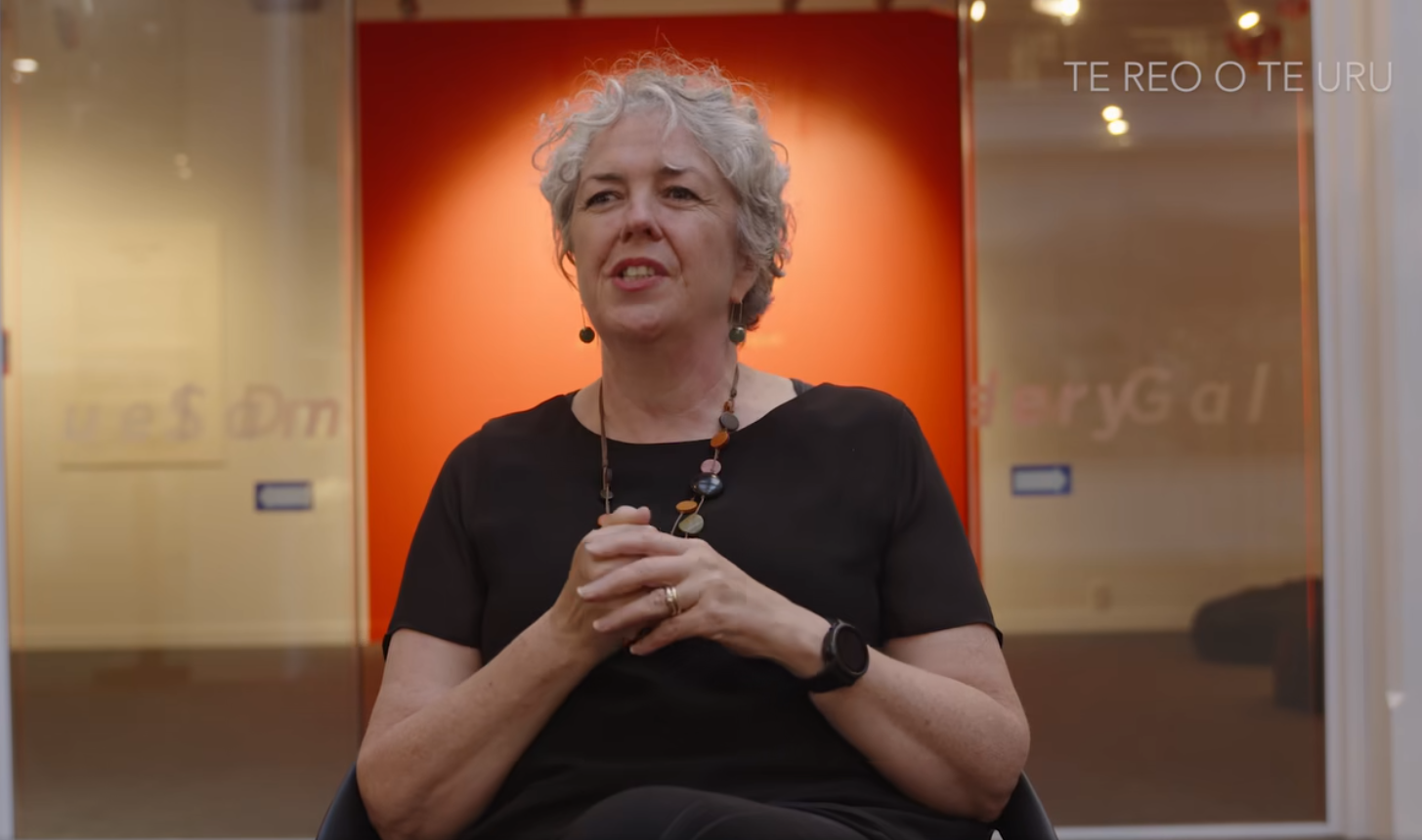News
Jean Lambert’s white rabbit hair coat has a classically modest design, but a rather majestic shawl collar makes it look like it belonged to a film star. The coat is made of about 120 white rabbit pelts, trimmed into rectangles and sewn together. The woolly shawl collar is a broad sheepskin strip, sewn onto the rabbit skins.
The coat is lined in pale green rayon brocade with a matching inner patch pocket. Cream silk lining in the back of collar may have been worn as a hood. The coat has three large rabbit skin-covered buttons with string cord loops and three small silk bows for decoration.
Rabbit hair (also called rabbit fur, coney or lapin) is the fur of the common rabbit. It was mostly used for hats and coats at the lower-priced end of the fur trade, really taking off in the 1920s. In New Zealand, rabbit skins were fairly cheap and had many characteristics of other more exotic furs such as mink – softness, warmth and attractiveness. In addition, they were much more available to New Zealanders than any other fur. The skins of white rabbits resemble ermine skins, the winter coat of a species of stoat, historically worn by kings and queens on their royal robes and sold at a premium in the fur trade. White rabbit skins could be effectively dyed to achieve other darker colours.
The coat was probably made in the 1930s when its owner was in her 40s, or a bit later. The collar seems to evoke 1930s glamour before the privations of World War II and post-war recovery. It was owned and worn by Jean Lambert (born 1890) of Whanganui. Jean, née Martin, married the Reverend Walter Lambert, an Anglican priest, who was about 16 years older than her. The couple moved round parishes in the North Island, notably Hāwera and Whakatane. They retired to Westmere, where Walter died in 1944. They appear to have had no children.
Jean bequeathed the rabbit hair coat to the museum, along with a large array of clothing, dolls and household items dating from the late 1800s to the 1950s. On the surface, she seems to have led a quiet life. There is no discernible record of her marriage in New Zealand, or of her husband’s birth. What is so interesting about the clothing in the bequest is its unexpected glamour. There are fashion coats in velvet and velour from the 1910s and 1920s, evening dresses from the 1920s and 1930s in crepe and sewn with beads, and others in satin and brocade. Jean obviously had a busy social life.
Also in Jean’s bequest is a French carriage clock, which provides a few clues about her life. Engraved on the front are the words, “Presented to The Rev W & Mrs. Lambert by the members of St. Mary’s Church, Wombwell, Easter 1910.” Wombwell is a small town near Barnsley, in South Yorkshire, England. The Reverend Lambert was probably English-born; hence, the lack of a birth record for him in New Zealand. Did he marry Jean in England? In 1910, she was only 20 years old, but may well have voyaged there at a young age. The couple were certainly in New Zealand by the mid to late 1920s, and Jean kept on buying or making fashion clothes, as shown in her bequest, including the white rabbit hair coat.
Jean died in Whanganui in 1975, aged 85.
By Libby Sharpe, Pou Tiaki/Senior Curator at Whanganui Regional Museum
Image: Jean Lambert’s rabbit hair coat, 1930s
Photographed by Kathy Greensides
WRM 1975.46.65
View the full-length image.

